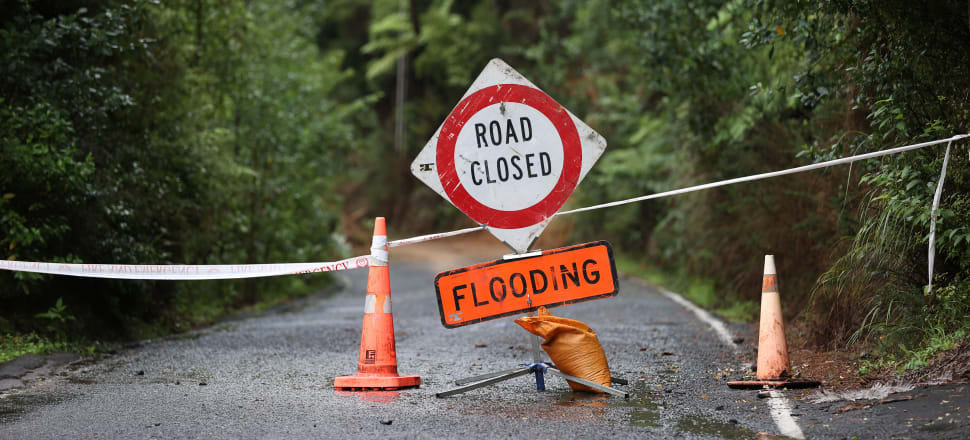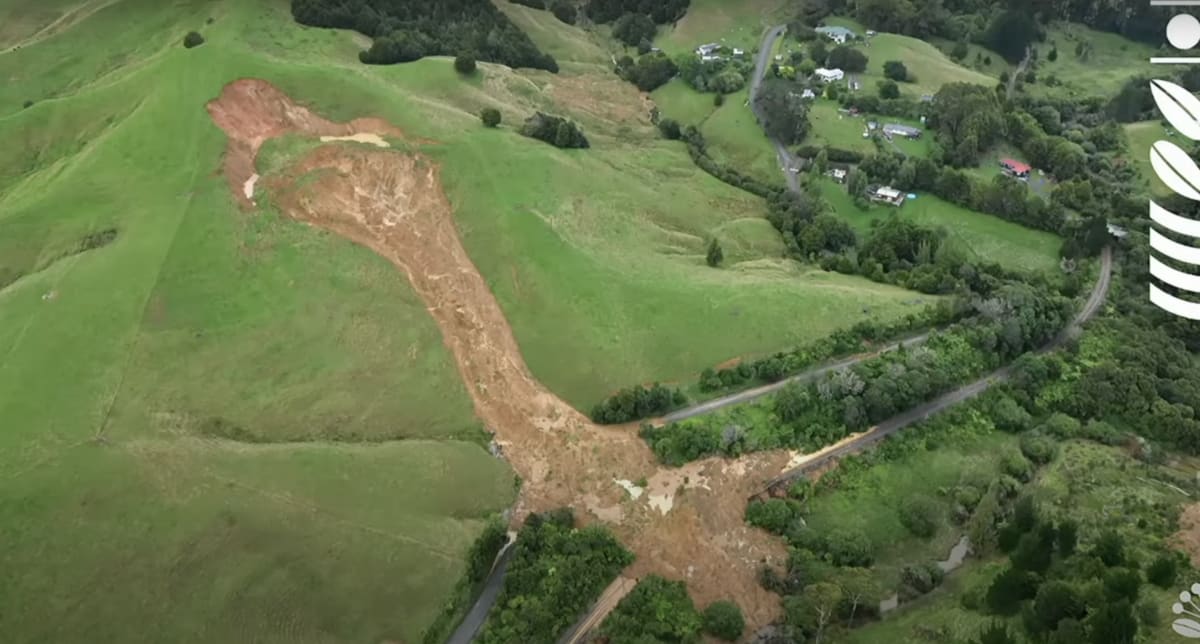
Council advised disastrous one-two punch should provoke a rethink about how important transport links like bridges are built.
The one-two punch of Auckland’s wettest 24 hours on record followed by Cyclone Gabrielle just over two weeks later has caused never-before-seen levels of damage to vital infrastructure.
Several thousand landslides in the past month as well as blocked drains and water-logged council assets have created a new level of fragility to the city’s systems, according to council workers who reported to councillors yesterday afternoon.
READ MORE: * Piha resilient, but looking for answers * Cyclone Gabrielle's path of destruction in seven charts
Despite the cyclone having moved off from the region to drop deadly levels of water on provinces further down the island, Auckland’s bruises are still readily visible.
They come in the form of an exposed and unusable water main on Scenic Drive, catch-pits and waterways still choked with debris and water treatment plants rendered inoperable by high levels of silt.
Then there’s the infrastructure damage that’s already been cleaned up - the 50 to 60 tonnes of debris that have been cleared by barge from the harbour, and the nearly 300 slips that had been cleared off roads before Cyclone Gabrielle.
As the cyclone bore down on the region, 300 road slips had been cleared to just 11. But the high winds and the renewed heavy rains of Gabrielle soon saw that number climb back up to 150.
Meanwhile, major slips damaged important arterial routes like Tamaki Drive and Great North Road, while an entire bridge was washed away on Mills Flat Road in Coatesville.
Auckland Transport chief engineer Murray Burt told the transport and infrastructure committee that the organisation was at the starting stages of a long recovery programme.
The first stage is assessment - the transport organisation has already completed a third of its ongoing damage inspections for all of the region’s bridges.
Burt said the twin disasters should provoke a rethink about how important transport infrastructure like bridges are built.
"I guess this is one of these areas where we are looking at what level of standard do we rebuild back, thinking about resilience and thinking about climate change,” he said. “Obviously that bridge wasn't designed to withstand a flood of this level.”
He said the stormwater network was another area that could bear with a rethink, saying Auckland’s current array of drains are designed for relatively small storms.
“After that there's an expectation that there will be flow across the road,” he said. “Possibly another area that we need to look at.”
He said Auckland Transport’s recovery programme will "swing into full force" next week, as it moves to getting services back to normal.
"A lot is going on.”
Other damage included two ferries with broken propellers following collisions with logs floating in the harbour.
"We already had issues with shortages of crews," Burt said. "And now with some vessels hitting logs, that also raises uncertainty."
Healthy Waters strategy manager Andrew Chin said the tremendous amount of slippage seen across the region, especially in the West, had put the water supply in a vulnerable position.
“The key message today is the system is still very fragile,” he said.
Sedimentation from landslides has stained the waters of the Lower Nihotupu Dam a dark coffee-coloured brown, and the build-up of silt has gone on to affect the water treatment plants that form an essential link in the complicated chain that ends with Aucklanders receiving drinkable water when they turn on the tap.
Water treatment plants in the west are out of commission or down to reduced capacity, meaning that most of the city’s water is now being rerouted from southern catchments like the water treatment plant in Ardmore.
It seems there’s enough of a margin of error that Aucklanders don’t need to worry too much right now, but that could change if water use isn’t kept in check.
"From the wider water network, we've lost a lot of redundancy," Chin said. "At the moment we've got the production meeting the amount of demand but we're keeping a very close eye on it… We don’t want a sudden spike of demand to really sort of take a little bit of that safety margin out of the city."
Certain areas have been hit harder - the coastal community of Muriwai, already reeling from massive damage to homes and the death of a firefighter on Monday night, are having to get their water from council-provided tankers.
The Muriwai water treatment plant has been red-stickered following landslide damage.
Meanwhile, fleets of tankers are topping up reservoirs in Helensville, and turbidity issues near Wellsford have reduced the safety margin in the northernmost parts of the region as well.
This was exacerbated by access issues through the Dome Valley earlier in the week, which prevented Watercare specialists from getting up to assess the damage.

Then when it comes to wastewater, Chin suspects there’s plenty of damage spread across private properties that the council isn’t even aware of yet.
"There's a lot of damage that we do not know about at the moment so we encourage the community to notify Watercare if they see that damage,” he said. “There will still be quite some time before we discover all of those issues in the local network. The good news is the trunk infrastructure is up in place."
Healthy Waters general manager Craig Mcilroy said the organisation received around 3500 requests for service following the two events - about 60 percent of the usual annual total.
“That of course is putting huge demands on the staff who are out there responding to these issues,” he said. “The good news is we've got out there and been able to look at nearly every request for service that's come in.”
He said Healthy Waters has almost 1000 ongoing engineering investigations and 300 full-time workers on the job.
But there’s plenty left to do.
There are 115,000 catch pits across the region that need to be cleared of debris.
The ownership of these catch pits is quite a complicated affair, with Auckland Transport owning the bulk of each one but the cleaning being contracted out to Healthy Waters.
Healthy Waters cleans out the sumps, while Auckland Transport undertakes street sweeping that cleans the grates and the grilles.
However, with many cars parked out on the streets, it’s not always possible to gain access to these drains.
Mcilroy suggested set days every few months where parking would be restricted on a street in order to ensure that the catch pits can receive a proper clean-out.
"Annual cleaning is not good enough,” he said. “We need to look at more funding to increase the frequency of that cleaning.”







